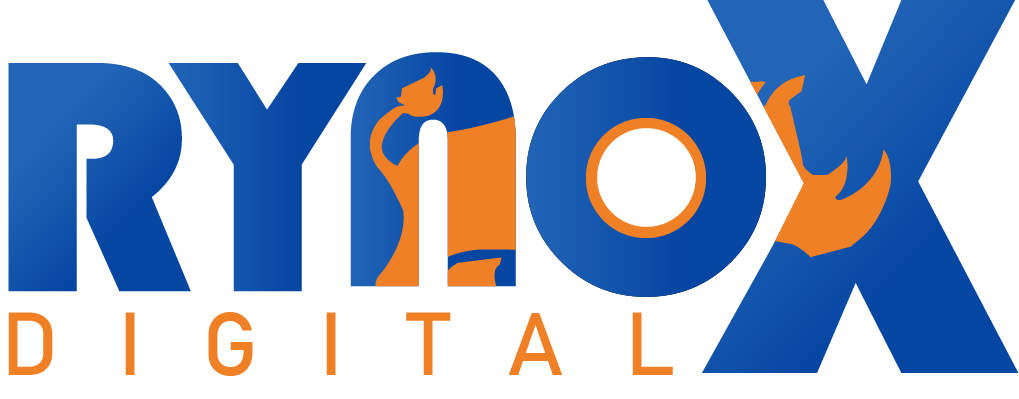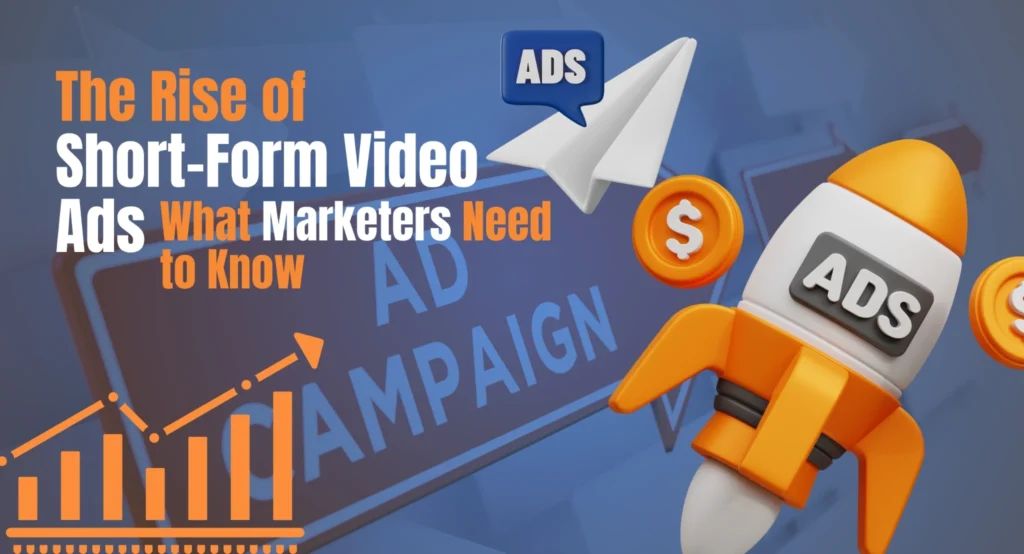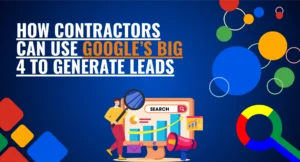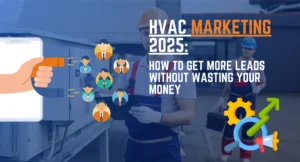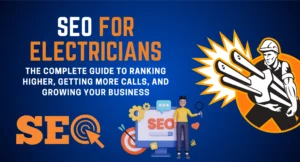Introduction: Why Video Ads Dominate Digital Marketing
The Shift to Video-First Marketing
Over the last decade, digital marketing has transformed, but nothing has reshaped it more than the rise of video ads. Platforms like TikTok, Instagram Reels, YouTube Shorts, and Facebook Stories have changed how consumers discover, interact with, and purchase from brands. In today’s digital landscape, static images and plain text ads no longer deliver the same impact they once did. Consumers crave content that is engaging, visual, and quick to digest — and that’s exactly what video ads deliver.
Recent studies show that over 80% of internet traffic is now driven by video content, and businesses that use video ads see conversion rates nearly 35% higher than those relying on static ads alone. This isn’t just a passing trend; it’s a fundamental shift in how marketing works.
Why Video Ads Matter for Businesses
The primary reason video ads dominate is simple: attention. In a crowded online world where consumers are bombarded with hundreds of messages daily, video cuts through the noise. A 15-second TikTok showcasing a roof transformation or a 30-second Instagram Reel of a kitchen remodel grabs more attention than a static flyer or even a blog post.
For contractors, remodelers, and service-based businesses, video ads offer a powerful way to:
- Showcase real projects with before-and-after results.
- Share client testimonials in an authentic, engaging format.
- Build trust quickly by showing the human side of the business.
In the construction and home improvement industries, where credibility and results matter most, video advertising is no longer optional — it’s essential.
Changing Consumer Behavior
The dominance of video ads is also tied to how consumer habits have shifted. Audiences today, especially younger demographics, spend more time on platforms designed for video-first engagement. Instead of reading lengthy posts, they prefer bite-sized, entertaining, and informative video clips.
For example:
- A homeowner might see a short-form video ad on Instagram showcasing a new landscaping project.
- They click to learn more, land on the contractor’s website, and submit a lead form.
- The initial interest was sparked entirely by a video ad that captured attention within seconds.
This “scroll, stop, and engage” behavior makes video the most powerful ad format available in 2025.
The ROI of Video Ads
One of the most compelling arguments for adopting video ads is the return on investment (ROI). Video consistently outperforms other content formats in both engagement and conversion. Businesses using video in their advertising see:
- 2x higher click-through rates compared to static image ads.
- Lower cost per lead, since video improves ad relevance scores.
- Stronger brand recall, with viewers remembering video content 3x longer than static content.
In industries where a single lead can generate thousands of dollars in revenue — like roofing, remodeling, or window installation — this improved ROI makes video ads a game-changer.
Setting the Stage for This Guide
This blog will explore everything marketers need to know about the rise of video ads, with a focus on short-form formats dominating platforms today. We’ll cover:
- What video ads are and how they differ from traditional advertising.
- Why consumers prefer short-form video content.
- The specific benefits of using video ads for businesses, especially contractors.
- Best practices for creating high-performing video ads.
- How to measure ROI and track campaign success.
- The future of video advertising in a rapidly changing digital landscape.
By the end, you’ll understand why video ads aren’t just another tactic but the centerpiece of modern digital marketing.
What Are Video Ads?
Defining Video Ads
At their core, video ads are promotional messages delivered in video format across digital platforms. Unlike static image ads or text-based promotions, video combines visuals, audio, and motion to engage viewers on multiple levels. This combination makes video ads one of the most effective formats for capturing attention and driving action.
Video ads can appear in many places:
- Social media feeds (TikTok, Instagram Reels, Facebook).
- Pre-roll or mid-roll on YouTube.
- Short clips embedded in websites or landing pages.
- Video placements inside apps.
The variety of formats and placements makes video an adaptable tool across the entire digital marketing funnel, from awareness to conversion.
Types of Video Ads
- Short-Form Video Ads
- Typically 15–60 seconds long.
- Found on TikTok, Instagram Reels, YouTube Shorts, and Facebook Stories.
- Focused on quick engagement: showing results, sparking curiosity, or highlighting offers.
- Example: A 20-second before-and-after video of a home renovation project.
- Long-Form Video Ads
- 1–5 minutes long (sometimes longer).
- Focused on storytelling, demonstrations, or education.
- Found on YouTube, websites, or as sponsored webinars.
- Example: A 3-minute walkthrough of a roofing installation process.
- Animated or Motion Graphic Video Ads
- Use graphics, text, and animations instead of live footage.
- Perfect for explaining abstract concepts or services.
- Example: A 30-second animated explainer for a contractor’s financing options.
- Testimonial or Case Study Video Ads
- Show real customers sharing experiences.
- Highly effective for trust-building.
- Example: A homeowner on camera praising a contractor’s workmanship.
Where Video Ads Fit in the Marketing Funnel
The power of video ads is that they can serve multiple stages of the buyer’s journey:
- Awareness (Top of Funnel): Short-form video ads introduce your business to new audiences.
- Consideration (Middle of Funnel): Explainer videos, testimonials, or project showcases help prospects evaluate options.
- Decision (Bottom of Funnel): Strong CTA-driven video ads push viewers to book a consultation or request a quote.
For contractors, a mix of short-form video ads for awareness and testimonial ads for decision-making often produces the strongest ROI.
Why Businesses Can’t Ignore Video Ads
The definition of video ads goes beyond just “moving pictures.” They represent the convergence of attention, emotion, and storytelling — three things static ads can’t achieve at scale. Studies show that:
- Viewers retain 95% of a video’s message, compared to 10% when reading text.
- Social platforms give video ads higher organic reach because they drive more engagement.
- Audiences are 2x more likely to share video content with others.
This means video isn’t just an ad format — it’s the most powerful communication tool businesses can use today.
The Bottom Line
So, what are video ads? They’re not just another way to advertise; they’re the most effective way to connect with modern audiences. Whether short-form or long-form, testimonial or animated, video ads engage viewers emotionally, drive higher conversions, and fit seamlessly into every stage of the marketing funnel.
For businesses in competitive industries — especially contractors and service providers — understanding and using the right types of video ads can mean the difference between staying invisible and becoming the go-to brand in your market.
Why Consumers Prefer Video Ads
The Power of Attention
In today’s crowded digital landscape, capturing attention is harder than ever. People scroll through endless posts, stories, and articles daily, and most content gets ignored within seconds. That’s where video ads stand out. By combining visuals, sound, and motion, they engage multiple senses at once, making it easier to grab and hold attention. Research shows that viewers are far more likely to interact with video compared to static images or text alone.
For example, a contractor showcasing a project time-lapse instantly communicates value in a way a flyer or blog headline cannot. The format itself demands attention.
The Rise of Short-Form Content
Modern consumers are busier and have shorter attention spans. They don’t always have time for long blog posts or 5-minute videos, but they will pause to watch a 15–30 second clip that’s entertaining or informative. Platforms like TikTok, Instagram Reels, YouTube Shorts, and Facebook Stories thrive on this behavior, making short-form content the new standard.
- Mobile-first design: Most short videos are vertical, designed for smartphones, where more than 75% of video content is consumed.
- Snackable storytelling: A remodeling contractor can show a full before-and-after in under 20 seconds.
- Platform algorithms: Social platforms prioritize quick, engaging clips, which means short-form video often earns more reach and impressions than static posts.
Consumers aren’t just tolerating short videos — they’re actively seeking them out.
Emotional Storytelling That Sticks
One of the biggest advantages of video is its ability to create emotional impact. Humans process visuals dramatically faster than text, and moving images paired with music or narration leave lasting impressions.
Think about a homeowner testimonial. Reading a quote on a website may build trust, but hearing the homeowner speak about their positive experience in a short clip feels authentic and persuasive. Similarly, showing a team at work in the field creates a sense of credibility and relatability that words alone can’t deliver.
This emotional dimension explains why video consistently outperforms static media in brand recall and conversions.
Higher Engagement Levels
Consumers don’t just watch videos — they interact with them. Compared to static posts, short clips receive more likes, comments, and shares, which compounds visibility. For businesses, this increased interaction translates into more brand awareness and stronger connections with potential customers.
- Facebook reports users spend up to 5x longer engaging with video than other content types.
- Instagram prioritizes Reels in its feed, giving short videos more organic reach.
- YouTube Shorts continues to grow rapidly, becoming a discovery tool for businesses of all sizes.
When content sparks engagement, it reaches not only the initial audience but their extended networks as well.
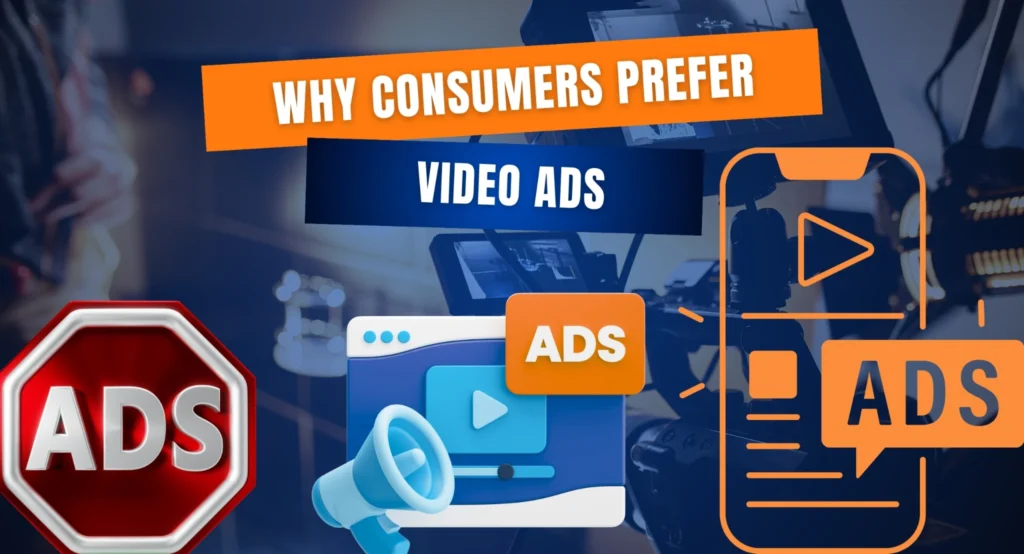
Building Trust Through Authenticity
In today’s skeptical marketplace, authenticity is one of the strongest drivers of consumer decisions. People want to see proof that a business can deliver on its promises. Video makes that possible in a real and relatable way.
For service providers and contractors, showcasing actual projects or sharing real customer experiences builds instant trust. A 20-second clip of a freshly finished paint job with the client smiling at the end feels genuine. It’s harder to doubt when you can see results unfold on screen.
The Bottom Line
Consumers prefer video ads because they’re aligned with how people consume content today: quick, mobile-friendly, emotionally engaging, and authentic. Short-form clips, in particular, fit perfectly into daily browsing habits and are more likely to be shared, remembered, and acted upon.
For businesses, especially in industries like construction and home improvement, meeting this preference isn’t optional — it’s necessary. Those who adapt to the way consumers want to engage will gain an edge, while those sticking to outdated ad formats risk being ignored.
Benefits of Video Ads for Businesses
Why Businesses Can’t Ignore Video
Marketing has always been about reaching the right people with the right message. In today’s digital world, video ads have become the most effective tool for doing exactly that. Unlike traditional formats, video blends storytelling and visual proof, making it easier for businesses to build credibility and inspire action. Whether you’re a contractor showcasing completed projects or a service-based brand promoting your expertise, the advantages of video advertising are too significant to overlook.
Increased Reach and Visibility
One of the biggest benefits of video ads is their ability to reach more people. Social platforms like Facebook, Instagram, TikTok, and YouTube prioritize video content in their algorithms, meaning ads in this format often gain more exposure than static posts. For businesses, that means better chances of connecting with potential customers.
- TikTok’s rapid rise shows the demand for short, engaging content.
- Instagram Reels consistently receive higher engagement compared to regular photo posts.
- YouTube remains the second-largest search engine, making it a prime channel for video discovery.
Simply put, businesses using video expand their reach far beyond what traditional ads can deliver.
Higher Engagement Rates
Engagement isn’t just a buzzword; it’s what drives conversions. Video ads outperform images and text because they capture attention longer and encourage interaction. Studies show that audiences are twice as likely to share videos than any other type of content.
For example:
- A 30-second ad highlighting a kitchen remodel gets more comments, likes, and shares than a static before-and-after photo.
- A testimonial video of a satisfied client encourages trust and sparks conversations in comment sections.
The more people engage, the more visibility your business gains — creating a ripple effect that boosts overall marketing performance.
Stronger Conversions
The ultimate test of any marketing strategy is whether it drives action. Here, video ads shine brightest. Because they combine emotion with proof, they influence purchase decisions more effectively.
- Viewers retain 95% of a video message compared to just 10% of text.
- Consumers are 84% more likely to buy a product or service after watching a video.
- Landing pages with embedded video can increase conversions by up to 80%.
For contractors and service providers, this can mean turning simple ad views into booked consultations or signed contracts.
Cost-Effective Marketing
Some businesses hesitate to use video ads, assuming they are expensive to produce. The reality is quite different. Thanks to smartphones, editing tools, and agency support, creating professional short-form content has never been more affordable. Compared to traditional advertising (TV, radio, print), digital video ads offer lower costs and more precise targeting.
- You can run a campaign with a $1,000 budget on Facebook or TikTok and generate measurable leads.
- Even short, authentic clips filmed on-site can perform better than polished but generic static ads.
This affordability combined with measurable ROI makes video one of the most cost-effective ad strategies available today.
Ideal for Visual Storytelling
Some industries rely heavily on visuals to showcase value — construction, painting, landscaping, and home improvement are perfect examples. In these fields, video ads allow businesses to highlight real results in a way that photos cannot.
- Before-and-after transformations.
- Time-lapse project videos.
- On-site team introductions.
- Customer testimonial clips.
By showing, not just telling, businesses build credibility and connect with potential clients on a deeper level.
The Bottom Line
The benefits of video ads are clear: wider reach, higher engagement, stronger conversions, cost efficiency, and unmatched storytelling potential. For contractors and service providers in particular, they represent the fastest and most effective way to stand out in competitive markets.
Ignoring this format means leaving opportunities on the table, while embracing it can transform digital marketing into a steady stream of leads and revenue.
Platform Breakdown: Where Video Ads Thrive
Why Platform Choice Matters
Not all platforms are created equal. Each social media channel has unique audiences, ad formats, and engagement styles. To maximize ROI, businesses need to understand where video ads work best and how to adapt content to each platform. Let’s break down the most important spaces where short-form content dominates.
TikTok Ads: Creativity and Virality
TikTok has exploded as a leader in short-form content, making it one of the hottest places for video ads. With its algorithm designed to push engaging videos to wide audiences, even small businesses can achieve viral reach without massive budgets.
- Best suited for: Brands targeting younger audiences or looking to showcase creativity.
- Ad formats: In-feed ads, branded effects, and TopView ads.
- Example: A roofing company runs a 20-second time-lapse of a storm repair job, set to trending audio. The ad blends in with organic content, making it feel authentic.
TikTok thrives on relatability. Businesses that experiment with casual, fun, and authentic content often see higher engagement than those using overly polished ads.
Instagram Reels Ads: Visual Storytelling
Instagram Reels is Meta’s response to TikTok — and it’s paying off. Reels are now prioritized in the platform’s algorithm, making them one of the best placements for video ads.
- Best suited for: Lifestyle, home improvement, and visually-driven industries.
- Ad formats: In-feed Reels ads, Explore tab promotions, and Story integrations.
- Example: A painting contractor posts a Reel showing a dramatic color transformation of a home. The ad feels native to the platform’s visual storytelling culture.
Instagram Reels combine visual appeal with brand storytelling, making them especially effective for industries where “seeing is believing.”
YouTube Shorts: Discoverability and Search Power
While TikTok and Instagram lead in virality, YouTube Shorts excels in discoverability. YouTube is the second-largest search engine, which means video ads here benefit from both short-form engagement and long-term visibility.
- Best suited for: Businesses wanting evergreen visibility plus quick attention.
- Ad formats: Shorts ads (appearing between clips), skippable and non-skippable pre-roll ads.
- Example: A remodeling company runs a 30-second ad showing a full kitchen transformation, optimized with keywords like “kitchen remodel near me.”
Unlike other platforms where ads disappear quickly, YouTube content builds search-based discoverability. This makes it a strategic platform for long-term ROI.
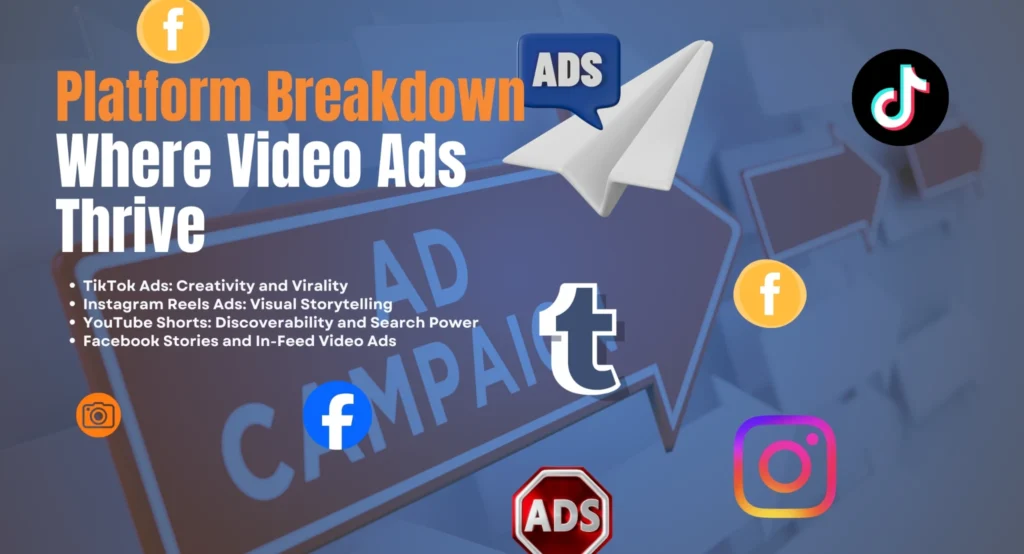
Facebook Stories and In-Feed Video Ads
Facebook may not be the newest player, but it remains a powerhouse for local businesses. With billions of users, Facebook Stories and in-feed placements are still highly effective for video ads.
- Best suited for: Local contractors, service providers, and SMBs.
- Ad formats: Stories ads, feed video ads, carousel video formats.
- Example: A landscaping company runs a 15-second ad in Stories showing a lawn makeover. A “Swipe Up” CTA drives users directly to a lead form.
Facebook’s strength lies in its detailed targeting options. Contractors can run ads targeting specific ZIP codes, homeowner demographics, or even people recently searching for related services.
Choosing the Right Platform
The best results don’t come from choosing just one platform but from matching your audience to the right channel.
- TikTok: Great for awareness, creative storytelling, and viral reach.
- Instagram Reels: Perfect for visual industries like home design and painting.
- YouTube Shorts: Combines discovery with search power for sustained visibility.
- Facebook Stories: Best for hyper-local targeting and direct lead generation.
Businesses that adapt their video ads to multiple platforms — while tailoring the style to each audience — achieve the strongest results.
The Bottom Line
The success of video ads depends not just on content quality but also on platform choice. TikTok delivers virality, Instagram excels in visual storytelling, YouTube offers discoverability, and Facebook provides local targeting power. Contractors and service providers who leverage the right mix can maximize reach, engagement, and ROI while staying ahead of competitors.
Best Practices for Creating High-Performing Video Ads
Why Strategy Matters
Running video ads isn’t just about posting clips online. To be effective, every ad needs to capture attention, deliver value, and motivate viewers to act. With short attention spans and crowded feeds, businesses must follow proven strategies to make their campaigns stand out.
Capture Attention in the First 3 Seconds
Audiences decide almost instantly whether they’ll keep watching or scroll past. The first three seconds of your video ads determine success.
- Use bold visuals: Start with a striking before-and-after transformation.
- Leverage text overlays: Highlight the key message immediately (“Save 20% on roofing repairs”).
- Incorporate trending sounds: Platforms like TikTok and Reels reward ads that align with popular audio.
Hook viewers early, and they’ll stay engaged long enough to see your message.
Keep It Short and Focused
While long-form videos have their place, short-form formats dominate most social platforms. The sweet spot for video ads is 15–30 seconds.
- Deliver one clear message instead of trying to cover everything.
- Focus on a single product, service, or customer benefit.
- End with a concise call-to-action, such as “Book a Free Consultation.”
Short, focused ads perform better because they match how people consume content today.
Show, Don’t Just Tell
Consumers trust what they can see. Instead of describing benefits, video ads should visually demonstrate them.
- Contractors can showcase transformations with time-lapse footage.
- Service providers can highlight happy customers using their service.
- Animated explainers can simplify complex processes.
The visual proof builds credibility and helps prospects picture results for themselves.
Add Captions and Text Overlays
Most social media users watch videos without sound, especially on mobile devices. Ignoring this behavior can reduce engagement. Adding captions ensures your message is clear even with audio off.
- Use bold, easy-to-read fonts.
- Emphasize keywords like “Free Estimate” or “Limited Time Offer.”
- Combine with voiceovers for maximum accessibility.
By doing so, your video ads become accessible and impactful regardless of how viewers consume them.
Highlight Emotional Storytelling
Facts inform, but stories sell. The best video ads connect emotionally with viewers.
- Share a customer’s journey before and after hiring your services.
- Show real team members at work, creating a sense of authenticity.
- Pair visuals with uplifting or relatable music to enhance emotional impact.
When ads make viewers feel something — trust, excitement, relief — they’re far more likely to convert.
Always Include a Strong CTA
A common mistake is creating engaging video ads without telling viewers what to do next. Every ad should include a call-to-action that aligns with campaign goals.
- Examples: “Call today,” “Schedule a free consultation,” “Visit our website.”
- Use both visual text and voiceovers to reinforce the CTA.
- Ensure the CTA appears in the final seconds when attention is highest.
Without a clear direction, even the best video risks wasting its potential.
Test and Optimize Continuously
No two audiences are alike. Successful marketers test multiple variations of video ads to see what works best.
- Try different lengths (15 vs. 30 seconds).
- Compare testimonials vs. project showcases.
- A/B test CTAs (“Book Now” vs. “Get Your Free Quote”).
Regular testing ensures ads evolve with consumer behavior and platform algorithms, improving ROI over time.
The Bottom Line
Creating high-performing video ads requires more than filming and uploading. By capturing attention early, keeping messages short, showcasing proof, adding captions, telling stories, and ending with clear CTAs, businesses can build ads that resonate and convert. For contractors and service providers, these practices turn video from a simple content format into a lead-generating powerhouse.
Measuring ROI of Video Ads
Why Measuring ROI Matters
Running campaigns without tracking results is like building a house without blueprints — costly and ineffective. The true strength of video ads isn’t just in capturing attention but in their ability to generate measurable returns. To maximize budgets, businesses must track ROI through clear metrics that show whether ads are converting views into leads and leads into sales.
Key Metrics for Evaluating Performance
- Engagement Rate
Engagement shows how audiences are responding. For video ads, this includes likes, shares, comments, and watch time. High engagement means your content is resonating and building awareness. - Click-Through Rate (CTR)
CTR measures how many viewers clicked your ad’s link or CTA. Strong visuals and compelling hooks increase CTR, making this a critical performance indicator. - Conversion Rate
Ultimately, the success of video ads depends on conversions. Did viewers schedule a consultation, request a quote, or make a purchase? Tracking conversions reveals how effectively ads drive business outcomes. - Cost Per Lead (CPL)
CPL shows how much you’re paying for each new lead. If one ad costs $15 per lead and another costs $50, the lower CPL delivers better ROI — assuming lead quality is consistent. - Return on Ad Spend (ROAS)
ROAS calculates total revenue generated compared to ad spend. For example, if you spend $1,000 on video ads and generate $5,000 in revenue, your ROAS is 5:1.
Comparing Video Ads to Other Formats
One reason businesses shift budgets toward video ads is performance compared to static or long-form content. Studies consistently show:
- Videos deliver 2x higher CTR than image ads.
- Landing pages with video convert up to 80% more visitors.
- Customers retain 95% of a message when viewed in video form, compared to 10% with text.
This performance gap makes video one of the most cost-effective advertising formats available.
Tracking Tools for ROI
To measure ROI effectively, businesses should use analytics tools and platform integrations:
- Facebook Ads Manager: Provides engagement, CTR, and conversion tracking.
- Google Analytics: Tracks website actions from video ad traffic.
- YouTube Analytics: Reports watch time, retention, and clicks.
- Third-party tools (HubSpot, SEMrush): Offer deeper insights into attribution and ROI.
For contractors and service providers, connecting video ads directly to CRM systems ensures leads are tracked from click to closed project.
Example: Contractor ROI from Video Ads
A painting contractor runs video ads on Instagram Reels, showing 15-second before-and-after transformations.
- Budget: $2,000/month.
- Results: 200,000 views, 3,500 clicks, 120 leads.
- Conversions: 30 jobs booked, worth $120,000 in revenue.
- ROI: For every $1 spent, $60 returned.
Without ROI tracking, this campaign might look like “just views.” With data, it proves that video is driving real business growth.
Continuous Optimization for Better ROI
Measuring ROI isn’t a one-time task. Successful businesses review results regularly and adjust strategies:
- Cut underperforming ads to save money.
- Scale high-ROI campaigns for maximum results.
- Test different hooks, CTAs, and formats to improve performance.
The flexibility of video ads makes them ideal for optimization, since businesses can quickly adjust creative elements or targeting to improve ROI.
The Bottom Line
Measuring ROI is what separates successful campaigns from wasted spend. By tracking engagement, CTR, conversions, CPL, and ROAS, businesses gain a clear picture of how well their video ads are performing. When optimized, these ads consistently outperform other formats, making them a cornerstone of profitable digital marketing strategies.
For contractors and service providers, this means turning ad spend into measurable leads and revenue — not just views.
The Future of Video Ads in Marketing
Video Ads as the New Standard
In the past, video was considered an “add-on” in digital marketing. Today, it’s the centerpiece of most strategies, and looking ahead, video ads are only becoming more dominant. As platforms evolve and consumer expectations rise, businesses must adapt to stay competitive. From AI-driven personalization to e-commerce integration, the future of advertising is video-first.
AI and Personalization
Artificial intelligence is changing the way video ads are delivered and consumed. Instead of showing the same message to everyone, AI allows ads to be customized in real time based on user data.
- Dynamic creative optimization (DCO): AI generates multiple versions of an ad, tailoring visuals and text for different audiences.
- Behavioral targeting: Ads adapt based on a user’s past searches, location, or browsing behavior.
- Personalized experiences: A homeowner searching for roofing tips could see a contractor’s ad highlighting storm damage repairs specific to their ZIP code.
This hyper-personalization makes ads more relevant and increases the likelihood of conversion.
Shoppable Video Ads and E-Commerce Integration
Another major trend shaping the future of video ads is the integration of shopping features directly into the content. Instead of watching a video and then visiting a separate site, consumers can now click and buy instantly.
- Instagram and TikTok shopping: Viewers tap on products shown in video ads and purchase without leaving the platform.
- YouTube shoppable ads: Businesses can tag products within a video for direct checkout.
- E-commerce tie-ins: Contractors could showcase services (like a window installation) with clickable CTAs that book consultations instantly.
Shoppable video ads shorten the sales funnel, making it easier to turn views into sales.
Growing Share of Ad Budgets
Industry reports predict that video ads will account for more than 80% of digital ad spend by 2027. This shift reflects the clear ROI advantage of video over static formats. Businesses are recognizing that audiences prefer video, and platforms are rewarding advertisers who embrace it.
For contractors and service providers, this trend means investing in video isn’t just smart — it’s necessary to remain competitive in local markets. Businesses that avoid video risk being overshadowed by competitors who embrace it.
Cross-Platform Expansion
While TikTok, Instagram, and YouTube dominate the current landscape, expect video ads to expand across even more platforms. LinkedIn, Twitter (X), and emerging social channels are all leaning into video-first strategies. This cross-platform growth ensures businesses can reach audiences in multiple contexts — from casual browsing to professional networking.
- LinkedIn video ads: Growing in B2B industries.
- X (formerly Twitter): Testing video-first discovery.
- Emerging apps: New platforms often prioritize video to capture younger audiences.
Adapting to new channels will give early adopters a competitive edge.
The Role of Storytelling and Authenticity
As technology advances, the human element will remain central. Audiences will continue to favor authentic, story-driven content over overly polished commercials. Businesses that show real projects, real people, and real transformations will thrive in the evolving world of video ads.
This is especially relevant for service-based industries like construction and home improvement, where trust and credibility play a major role in decision-making.
The Bottom Line
The future of marketing is undeniably video-first. AI will personalize campaigns, shoppable formats will drive instant purchases, and ad budgets will increasingly shift toward video ads. For contractors and service providers, adopting these trends early means staying ahead of the curve, winning attention, and converting more leads into customers.
Those who embrace innovation will see their marketing evolve into a consistent growth engine. Those who don’t may struggle to keep up in a market where video is the language of consumer choice.
Conclusion: Why Video Ads Are Essential for Growth
The Big Takeaway
From TikTok to YouTube Shorts, from Instagram Reels to Facebook Stories, one truth has become undeniable: video ads are now the most powerful form of digital advertising. They grab attention faster, engage audiences more deeply, and deliver higher ROI than traditional formats.
For businesses — especially contractors, remodelers, and service providers — ignoring video means missing out on the very content consumers prefer to watch and act on. The data is clear: people remember videos, share them more often, and are more likely to convert after watching them.
A Format That Works at Every Stage
Unlike static content, video ads seamlessly fit every stage of the buyer’s journey:
- Awareness: Short-form clips build instant visibility and brand recognition.
- Consideration: Story-driven ads help prospects evaluate and trust your services.
- Decision: Strong CTAs in video push viewers to take the final step, from booking consultations to signing contracts.
This versatility is why businesses across industries are shifting larger portions of their budgets to video.
The Competitive Edge for Contractors
In industries like construction, painting, landscaping, and remodeling, results speak louder than words. Video ads allow contractors to show real transformations, highlight customer testimonials, and build credibility faster than any brochure or static ad could.
When prospects can see your work in action, they don’t just believe in your brand — they feel confident choosing you over competitors.
The Bottom Line
The rise of video ads is not a passing trend. It’s the new foundation of effective marketing. Businesses that adopt this format today will capture attention, build trust, and grow faster than those relying on outdated methods.
If you want your marketing to generate consistent leads, strengthen your brand, and deliver measurable ROI, video should no longer be an option — it should be your priority.
Work With Rynox Digital
At Rynox Digital, we specialize in creating high-performing video ads and digital campaigns tailored for contractors and service-based businesses. From strategy and creative to targeting and optimization, we handle every step so you can focus on what you do best — serving your clients.
Don’t just run ads. Run ads that work. Partner with Rynox Digital today and turn clicks into consistent leads.
